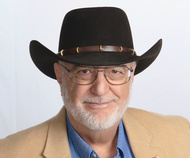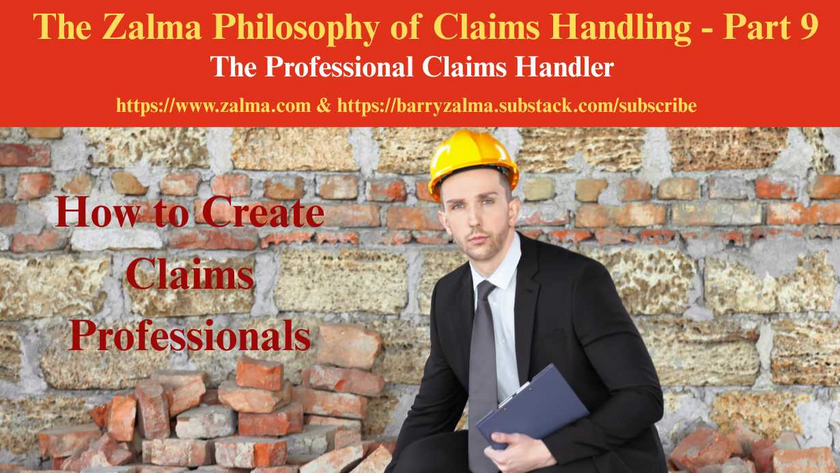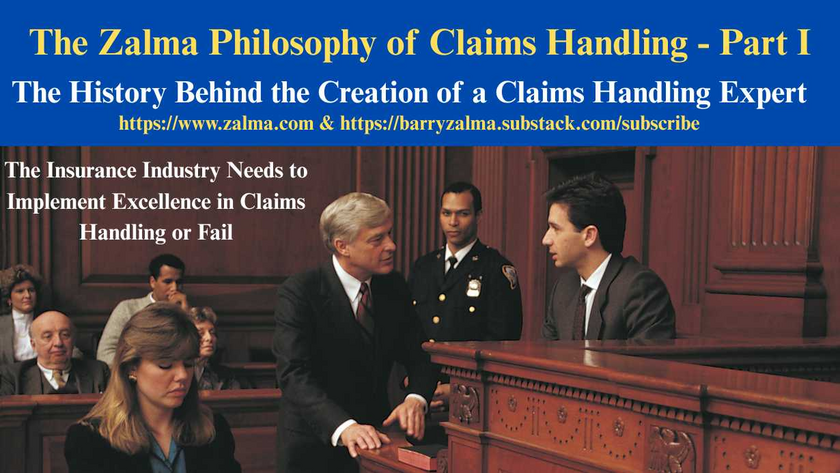
Murder for Insurance Proceeds Results in Life in Prison
It Is Not Nice to Break Your Wife's Neck to Collect her Life Insurance So You Get Life In Prison
Post 5067
See the full video at https://lnkd.in/gm2t_AX4 and at https://lnkd.in/grPYwukK, and at https://zalma.com/blog plus more than 5050 posts.
Insurance fraudster and murder Kenneth Russell Moyer appealed the trial court's denial of his petition for resentencing under Penal Code section 1172.6. Moyer took issue with the jury's conclusion he was a beneficiary on his wife's insurance policy, his counsel's failure to properly litigate this issue at his first trial and argued his appellate counsel's conclusion he is ineligible for relief under section 1172.6 constituted ineffective assistance of counsel.
In The People v. Kenneth Russell Moyer, C100909, California Court of Appeals, Third District, El Dorado (April 23, 2025) the Court of Appeals kept the killer in jail.
BACKGROUND
The information charged Moyer with murder, conspiracy to commit murder, insurance fraud and attempted escape while felony charges are pending. The information further alleged the special circumstance that the murder was committed for financial gain.
The facts of the underlying the offense are set forth in the appellate opinion from Moyer's prior appeal. (People v. Moyer (Aug. 30, 1996, C019477) [nonpub. opn.] (Moyer).)
Succinctly stated, in this case, a wealthy widow marries an unfaithful man who takes financial advantage of her, leading to her murder.
Shortly after the start of their marriage, Moyer shared his plans with Ross, a former employee who was in prison. The two discussed whether Ross would kill the victim for Moyer when he was released from prison in 1992 by breaking her neck. The plan failed when Ross was denied release.
In September 1992, Moyer and the victim each took out $180,000 life insurance policies. Each policy required a physical examination. Moyer was the beneficiary of the victim's policy. The victim completed her physical examination, and her life insurance policy became effective. That evening a passing motorist reported seeing a car plunge down an embankment. The motorist found the victim dead in the driver's seat, covered in dried blood. Mitch McLees was semiconscious in the passenger seat but suddenly became alert when paramedics attempted to intubate him. He had no internal injuries and only a small cut.
A pathologist determined that the victim did not die in the car accident but rather died from a broken neck.
McLees testified that he was working in the couple's garage the night of the murder. When Moyer called out to him, he came into the house and found Moyer standing over the victim's body. Moyer told McLees that he had already killed the victim and instructed him to drive somewhere and stage an accident. When McLees refused, Moyer threatened to tell the police that McLees had killed the victim and also threatened his family and fiancée.
After the murder, Moyer hired workers to scrape grout from the tiles in his home's entryway, explaining that he had spilled cherry cough syrup on them. However, when investigators analyzed the grout, they found the victim's blood.
THE TRIAL
McLees was convicted of first degree murder of the victim for financial gain and insurance fraud. The jury convicted Moyer of murder, conspiracy to commit murder and insurance fraud. The jury also found true the special circumstance that the murder was committed for financial gain.
The trial court sentenced Moyer to life without the possibility of parole for the murder, 25 years to life for the conspiracy, and three years in state prison for the attempted escape.
Moyer moved for resentencing and the trial court denied the petition, finding the record of conviction ... was found by the jury to have acted with the intent to kill; therefore, as to both counts, the Petitioner is ineligible for relief as a matter of law and the Court does not find a prima facie showing has been made."
DISCUSSION
Senate Bill No. 1437 added what is now section 1172.6, which allows those convicted of felony murder or murder under the natural and probable consequences doctrine to seek relief.
As to Moyer's murder conviction, the trial court instructed the jury on the elements of murder: that a human being was killed, the killing was unlawful, and the killing was done with malice aforethought. More importantly, the trial court instructed the jury on the special circumstance allegation that the murder was committed for financial gain. The jury found Moyer guilty of first degree murder and found this special circumstance allegation the murder was committed for financial gain true.
As to the factual finding Moyer had the requisite intent to kill. Here the trial court did not err in denying Moyer's petition because he was ineligible for relief as a matter of law based on the jury's special circumstance finding he was the actual killer or he was a direct aider and abettor who had the intent to kill the victim.
ZALMA OPINION
Many in the police, judiciary, and prosecutors believe that insurance fraud is not a violent crime. When a man breaks his wife's neck so he can collect the proceeds of a life insurance policy, the act is as violent a crime as can be conceived. The unmitigated gall of the murderer to first unsuccessfully appeal his conviction and then move to reduce his sentence failed because the evidence was overwhelming and the California Court of Appeal recognized that murder for profit is a serious crime keeping Moyer in Prison for the rest of his life.
(c) 2025 Barry Zalma & ClaimSchool, Inc.
Please tell your friends and colleagues about this blog and the videos and let them subscribe to the blog and the videos.
Subscribe to my substack at https://barryzalma.substack.com/subscribe
Go to X @bzalma; Go to Barry Zalma videos at Rumble.com at https://rumble.com/account/content?type=all; Go to Barry Zalma on YouTube- https://www.youtube.com/channel/UCysiZklEtxZsSF9DfC0Expg; Go to the Insurance Claims Library – https://lnkd.in/gwEYk
Insurer’s Exclusion for Claims of Assault & Battery is Effective
Post 5250
Read the full article at https://lnkd.in/gBzt2vw9, see the video at https://lnkd.in/gEBBE-e6 and at https://lnkd.in/gk7EcVn9, and at https://zalma.com/blog plus more than 5250 posts.
Bar Fight With Security is an Excluded Assault & Battery
In The Cincinnati Specialty Underwriters Insurance Company v. Mainline Private Security, LLC, et al., Civil Action No. 24-3871, United States District Court, E.D. Pennsylvania (December 16, 2025) two violent attacks occurred in Philadelphia involving young men, Eric Pope (who died) and Rishabh Abhyankar (who suffered catastrophic injuries). Both incidents involved security guards provided by Mainline Private Security, LLC (“Mainline”) at local bars. The estates of the victims sued the attackers, the bars, and Mainline for negligence and assault/battery. The insurer exhausted a special limit and then denied defense or indemnity to Mainline Private Security.
INSURANCE COVERAGE
Mainline had purchased a commercial ...
Marine Insurer May Dispose of Vessel to Avoid Waste
Post 5249
Read the full article at https://lnkd.in/gfn_UHdp, see the video at https://lnkd.in/gDWVccnr and at https://lnkd.in/gv9nsBqk, and https://zalma.com/blog plus more than 5200 posts.
In Western World Insurance Company v. The Estate Of Shawn Arsenault, No. 25-cv-13413-PGL, United States District Court, D. Massachusetts (December 17, 2025) the USDC was asked to resolve a marine insurance dispute after the sinking of the F/V Seahorse, a commercial fishing vessel, off Cape Cod on June 8, 2025. The vessel’s owner and operator, Shawn Arsenault, died in the incident.
Western World Insurance Company issued a hull insurance policy for the vessel. With no personal representative yet appointed for the estate, the insurer cannot determine the proper payee for the insurance proceeds.
The insurer paid for the vessel’s recovery and removal, and the vessel is now with a salvage company, incurring substantial storage fees. The insurer determined the loss is covered under the ...
Marine Insurer May Dispose of Vessel to Avoid Waste
Post 5249
Read the full article at https://lnkd.in/gfn_UHdp, see the video at https://lnkd.in/gDWVccnr and at https://lnkd.in/gv9nsBqk, and https://zalma.com/blog plus more than 5200 posts.
In Western World Insurance Company v. The Estate Of Shawn Arsenault, No. 25-cv-13413-PGL, United States District Court, D. Massachusetts (December 17, 2025) the USDC was asked to resolve a marine insurance dispute after the sinking of the F/V Seahorse, a commercial fishing vessel, off Cape Cod on June 8, 2025. The vessel’s owner and operator, Shawn Arsenault, died in the incident.
Western World Insurance Company issued a hull insurance policy for the vessel. With no personal representative yet appointed for the estate, the insurer cannot determine the proper payee for the insurance proceeds.
The insurer paid for the vessel’s recovery and removal, and the vessel is now with a salvage company, incurring substantial storage fees. The insurer determined the loss is covered under the ...
Zalma’s Insurance Fraud Letter
Read the full article at https://lnkd.in/dG829BF6; see the video at https://lnkd.in/dyCggZMZ and at https://lnkd.in/d6a9QdDd.
ZIFL Volume 29, Issue 24
Subscribe to the e-mail Version of ZIFL, it’s Free! https://visitor.r20.constantcontact.com/manage/optin?v=001Gb86hroKqEYVdo-PWnMUkcitKvwMc3HNWiyrn6jw8ERzpnmgU_oNjTrm1U1YGZ7_ay4AZ7_mCLQBKsXokYWFyD_Xo_zMFYUMovVTCgTAs7liC1eR4LsDBrk2zBNDMBPp7Bq0VeAA-SNvk6xgrgl8dNR0BjCMTm_gE7bAycDEHwRXFAoyVjSABkXPPaG2Jb3SEvkeZXRXPDs%3D
Zalma’s Insurance Fraud Letter (ZIFL) continues its 29th year of publication dedicated to those involved in reducing the effect of insurance fraud. ZIFL is published 24 times a year by ClaimSchool and is written by Barry Zalma. It is provided FREE to anyone who visits the site at http://zalma.com/zalmas-insurance-fraud-letter-2/
Zalma’s Insurance Fraud Letter
Merry Christmas & Happy Hannukah
Read the following Articles from the December 15, 2025 issue:
Read the full 19 page issue of ZIFL at ...
The Professional Claims Handler
Post 5219
Posted on October 31, 2025 by Barry Zalma
An Insurance claims professionals should be a person who:
Can read and understand the insurance policies issued by the insurer.
Understands the promises made by the policy.
Understand their obligation, as an insurer’s claims staff, to fulfill the promises made.
Are competent investigators.
Have empathy and recognize the difference between empathy and sympathy.
Understand medicine relating to traumatic injuries and are sufficiently versed in tort law to deal with lawyers as equals.
Understand how to repair damage to real and personal property and the value of the repairs or the property.
Understand how to negotiate a fair and reasonable settlement with the insured that is fair and reasonable to both the insured and the insurer.
How to Create Claims Professionals
To avoid fraudulent claims, claims of breach of contract, bad faith, punitive damages, unresolved losses, and to make a profit, insurers ...

The History Behind the Creation of a Claims Handling Expert
The Insurance Industry Needs to Implement Excellence in Claims Handling or Fail
Post 5210
This is a change from my normal blog postings. It is my attempt. in more than one post, to explain the need for professional claims representatives who comply with the basic custom and practice of the insurance industry. This statement of my philosophy on claims handling starts with my history as a claims adjuster, insurance defense and coverage lawyer and insurance claims handling expert.
My Training to be an Insurance Claims Adjuster
When I was discharged from the US Army in 1967 I was hired as an insurance adjuster trainee by a professional and well respected insurance company. The insurer took a chance on me because I had been an Army Intelligence Investigator for my three years in the military and could use that training and experience to be a basis to become a professional insurance adjuster.
I was initially sat at a desk reading a text-book on insurance ...













